7 Examples of Excellent Ecommerce Site Search
Join Head of Product at Findify, Anders Gullander, as he shares 7 excellent examples of ecommerce site search to leave you feeling inspired!
Written By
Guest Blogger

It is hardly news that ecommerce is thriving. Within the next three years alone, the sector will be worth more than $6.5 trillion annually – almost a quarter of all total retail.
While we can all appreciate how positive this growth is, the sector is not without its challenges. A lot of merchants are spending increasing amounts of time and money trying to attract shoppers – but aren’t seeing the appropriate return in conversion.
Having an excellent site search capability on your website mitigates this imbalance.
Unlike the customers who browse through websites, shoppers who conduct site searches are characterised by high purchase intent. When a search immediately returns relevant results, the conversion rate is between two and three times higher than visitors who have to scroll through collection pages.
Overall, this means that 15% of visitors can generate 40% of total sales, if site search is properly executed, thus providing the merchant with excellent value for money at minimal time investment.
But what makes for excellent site search execution? Here’s a list of the key components, and the businesses currently using these capabilities to drive sales and reduce churn:
Ecommerce site search examples – 7 of the best
#1 BH Cosmetics: Making the visuals work for them

When it comes to marketing products, pictures really do speak louder than words.
Research shows that humans only retain up to 20% of the information they read, compared to a 65% retention rate as soon as that information is paired with an image.
As such, showing pictures of products as part of your search engine autocomplete is a no-brainer – it’s a fantastic way to make a bigger impression on customers and customise their shopping experience even further.
One of the best examples of this can be found on the website of beauty brand BH Cosmetics. The brand has an excellent search capability – one which has been truly customised to put a focus on their striking visuals.
#2 Everlast: Strengthening shopper journeys with social content
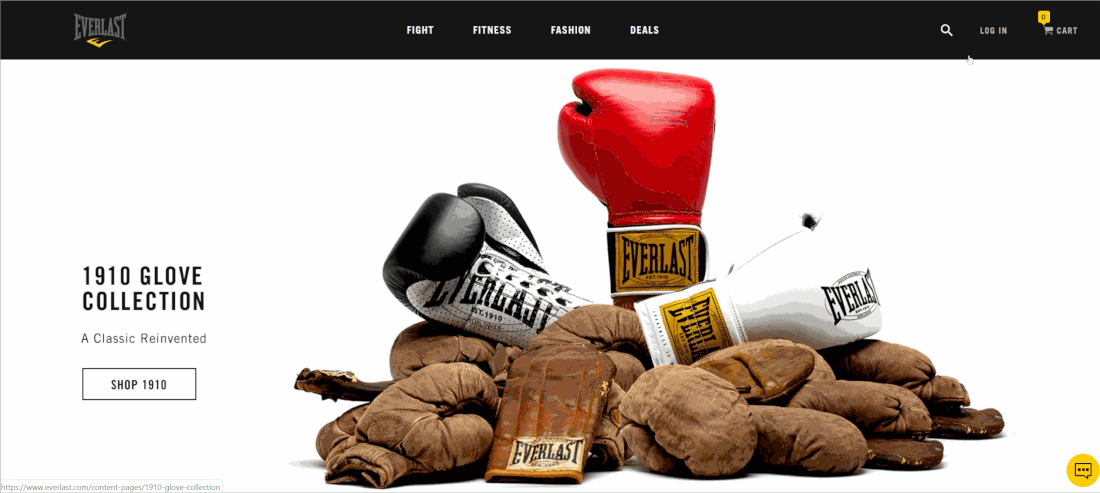
Many merchants have a rich content library available to them, used well for shopper recruitment.
But bringing the product even closer to the actual product experience allows merchants to further leverage this content.
Realising this, well-known sports brand Everlast recently decided to make the most of its blog content.
Adding social content, such as blogs and Instagram feeds, directly to the search experience strengthens the shopper journey and allows merchants to engage with shoppers directly at the point of purchase.
On Everlast’s site, shoppers can search for products as normal – but this time they will also be given the option to see social content about those specific products to help them make their mind up.
#3 Rocket Dog: Leveraging NLP to find what people are really looking for
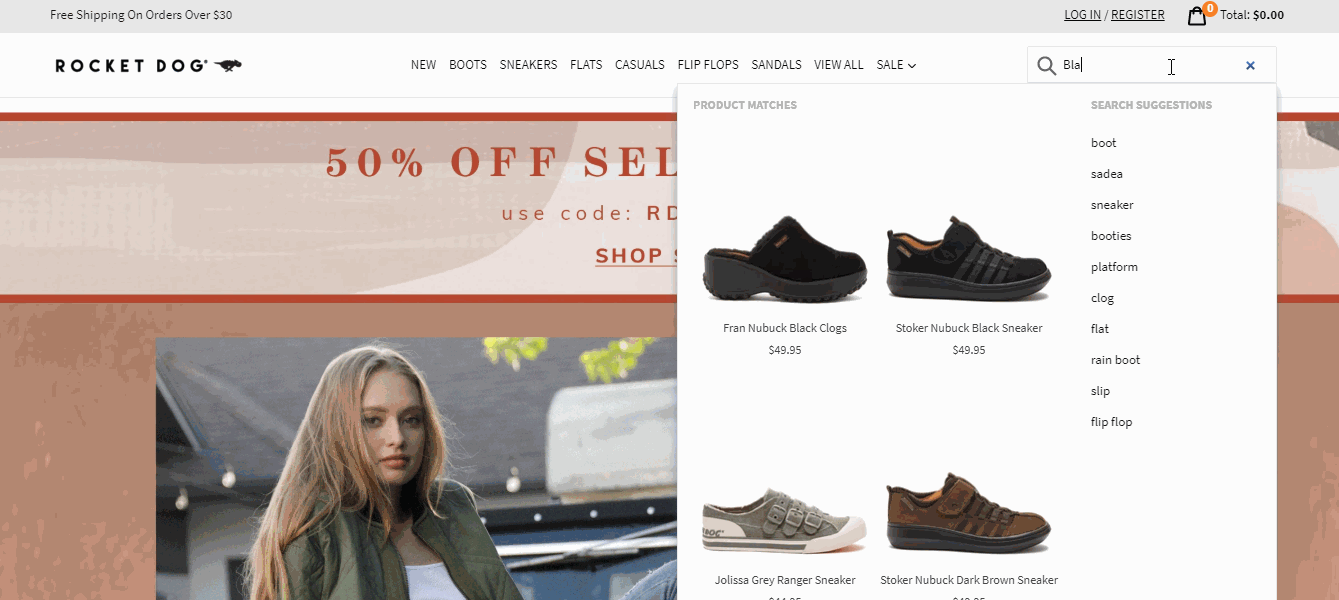
As you may already know, Natural Language Processing (NLP) is a form of AI that extracts meaning from human language to make decisions based on the information.
This technology is integral when developing an excellent site search capability. With it, the search bar can interpret the meaning of words in the same was as a human salesperson and can tell the difference between the product, a product attribute, a category, and a brand.
Take, for example, top footwear company Rocket Dog and the search term “Black Sneaker 11”. Using NLP, an excellent site search will be able to tell the difference between every single word, ensuring accurate results. It knows “Black” is the attribute you’re looking for, “Sneaker” is the product, and “11” has to be the size you want to order.
#4 Draper James: Implementing multiple levels of personalisation
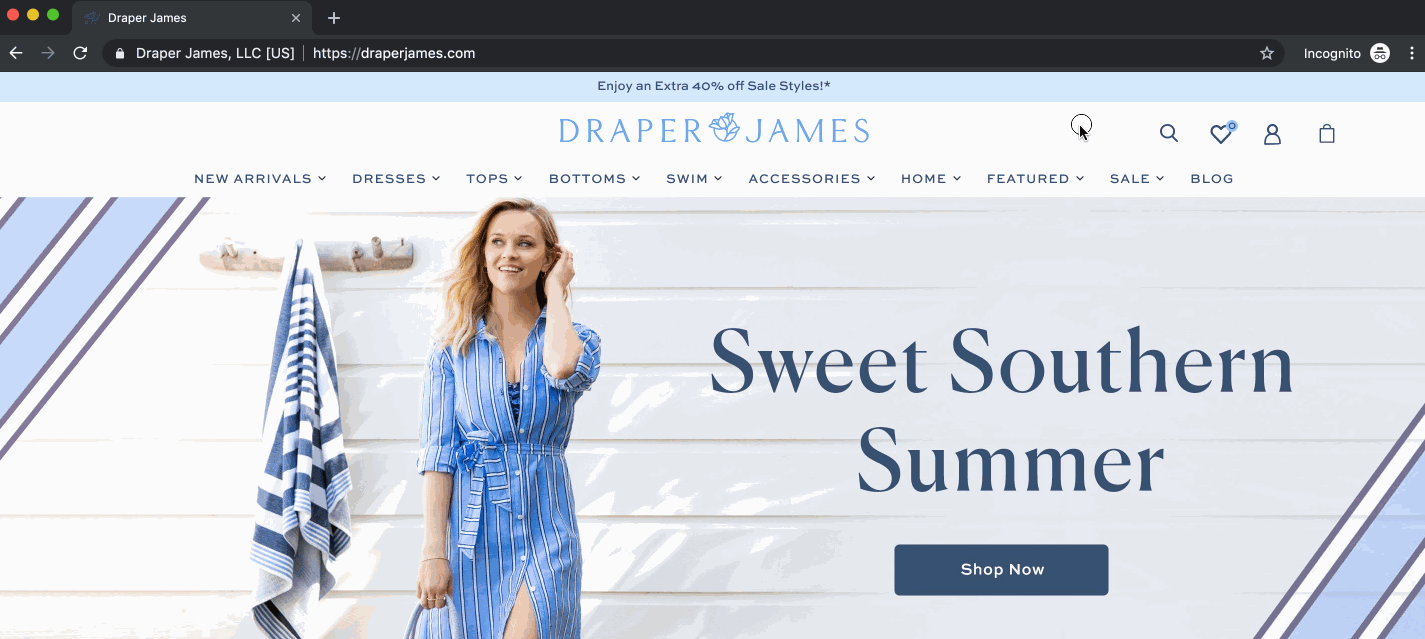
These days, many companies make a big deal about how they’re providing low cost personalisation.
Companies offering this basic level of search personalisation do so only by way of aggregation, however. Their software collects general information on the masses, and then tailors search results depending on current trends and how the majority of people generally tend to behave.
While this first level personalisation is still valuable, as any level of personalisation has been proven to increase conversion rates, deeper levels do exist and should be considered in order to maximise sales.
Individual personalisation collects information on the individual shopper, learning their habits and their own specific preferences.
Let’s say, for example, a shopper called Jane goes to actress Reese Witherspoon’s Draper James clothing website – a site which has multiple levels of personalisation.
The first time Jane visits, she sees search results sorted in order of what is popular with others – first level personalisation. As she browses the site, the AI running in the background starts learning what Jane likes, and begins to curate her experience using individual personalisation.
As it learns, it starts showing Jane items such as red dresses and clothes with a bohemian style – it has learned this is what she prefers.
#5 Sleefs: Improving accuracy with synonym results
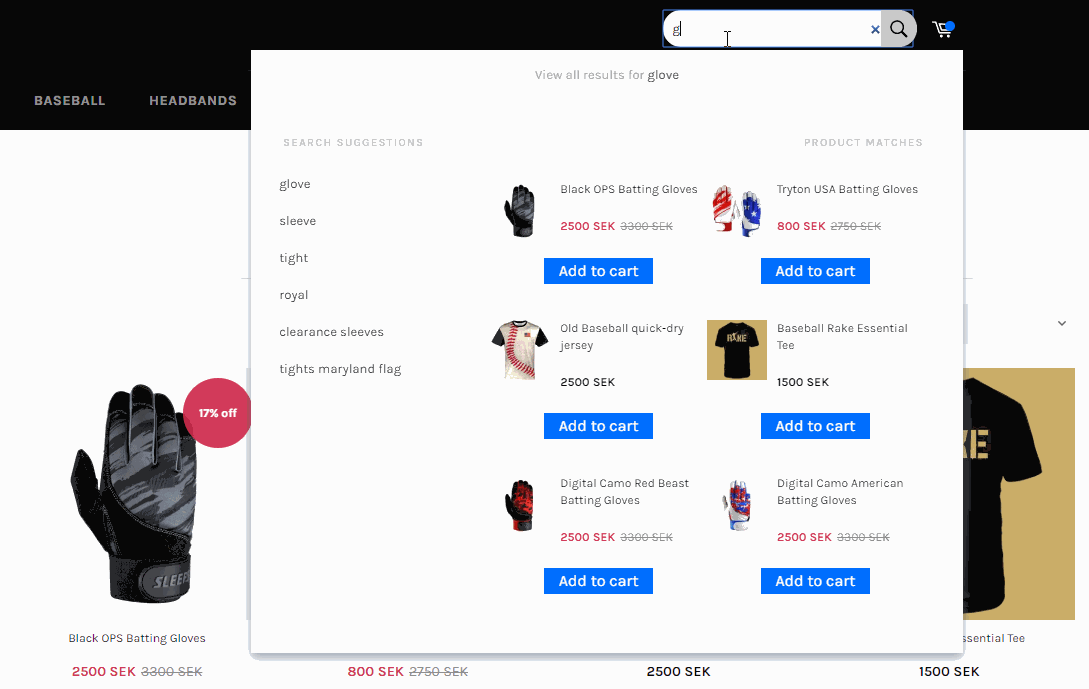
Quite often different people will refer to the same item in many different ways. Take, for example, pants vs trousers, sweaters vs jumpers, trainers vs sneakers vs runners. People may also spell the same words differently, such as grey and gray.
Merchants need to allow for this by making their ecommerce site search as intelligent as possible. Part of this is implementing a synonym control tool which returns the correct product results no matter which way the customer describes the product they’re looking for.
A basic site search provides only very limited synonym capabilities, using a set synonym dictionary. Providers working with the latest in AI technology, however, have taken this one step further, using machine learning to ensure that synonyms are constantly being suggested based on visitor behaviour.
Take a look at synonym control in action over on the Sleefs online store.
#6 Victoria Beckham: Ensuring even ‘Zero Results’ produces results

A zero results page occurs when a customer searches for something which you either don’t have on your website, or they search for an item you usually have but which is now out of stock.
It’s important that a zero results search leads to other relevant products so customers can see similar items they might possibly want to buy. It’s also important that analytics captures the term which leads to the zero results search so the merchant can either order more items if something is out of stock, or consider buying a new product if a lot of their customers are searching for it.
This is important for the team at Victoria Beckham, who have an excellent zero results workaround.
#7 The Skin Nerd: Providing exceptional spelling tolerance
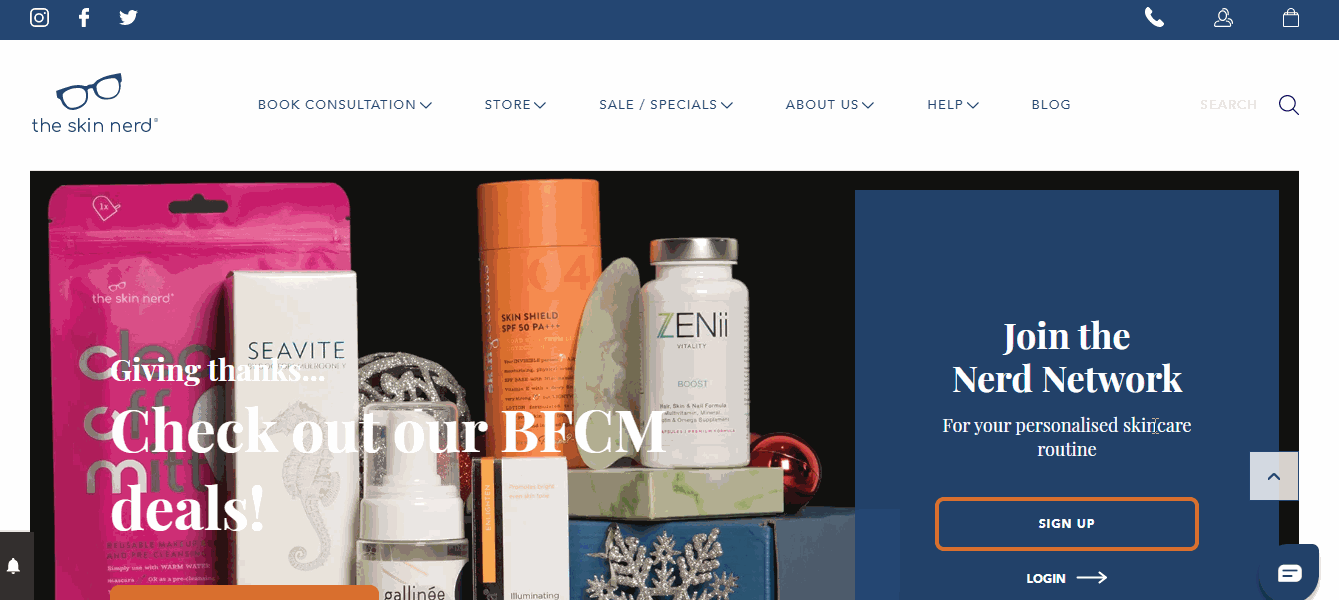
The ability to make sense of misspellings is a basic, yet extremely important, site search capability.
Take, for example, the skin care products on offer at The Skin Nerd. On their website, if a customer makes a spelling error in their search, it still returns relevant products.
If a shopper wants to buy a face cleanser, but they accidentally search for “Cleener” or even “Cleenr”, they will still get results that include face cleansers, and face cleansing mitts.
When a website’s search function doesn’t have this capability, and returns either no results or no results that are relevant, the customer is unlikely to search again and their revenue will be lost.
There you have it, 7 examples of excellent ecommerce site search to leave you feeling inspired!
About Findify
Findify is a leading Artificial Intelligence personalisation platform which provides ecommerce merchants with smart search solutions. For more information, go to www.findify.io or email yourfriends@findify to book a no-strings-attached demo.

